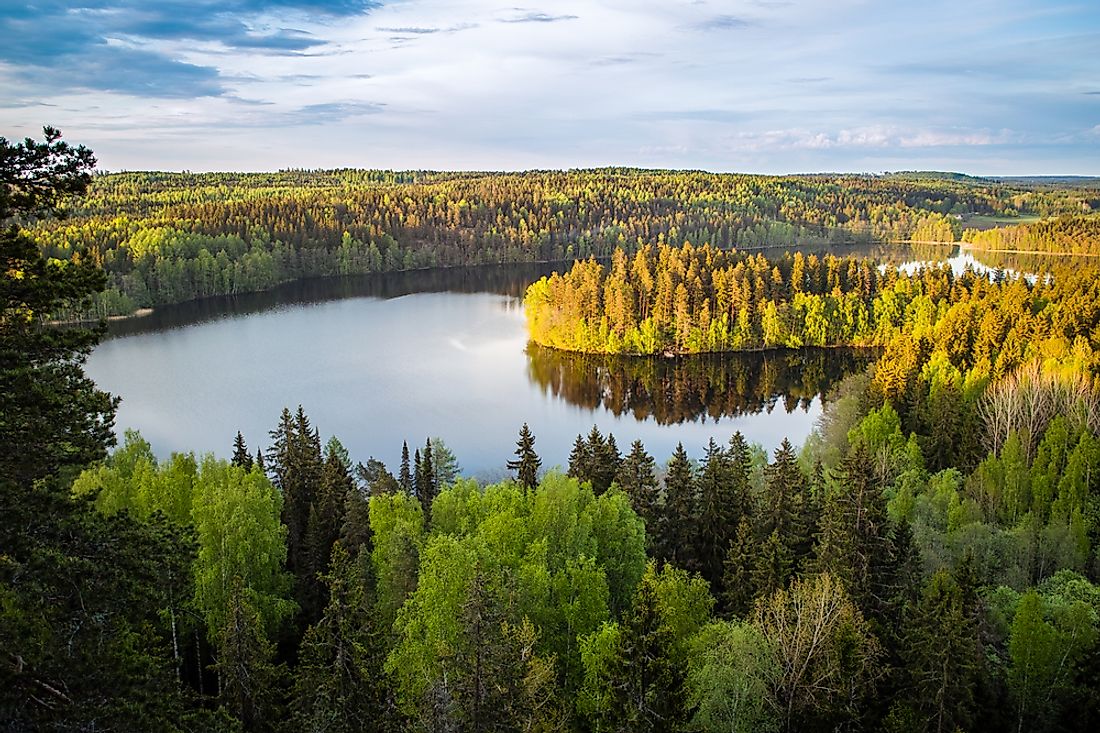Why Is Finland Called A Land of a Thousand Lakes?

Finland is a country in Northern Europe. Sweden borders it to the northwest, Estonia to the south, Russia to the east, and Norway to the north. Finland is part of the European Union with its capital city being Helsinki. With a population of 5.5 million people, it has over 187,000 lakes. The thousands of lakes in Finland are the reason why the country's nickname is “the land of a thousand lakes.” A comparison of the number of lakes with its population reveals that there is one lake for every 26 Finns. Water makes up 10% of the land area in Finland. Then two-thirds of the land is made up of forest vegetation. As a result, Finland’s scenic beauty is incomparable to most nations in Europe. It is no wonder Finland has become one of Europe’s best tourist destinations.
The Splendor Of Finland
Besides the thousands of the lakes in Finland, forests cover most parts of the country. The dominant types of trees in the forest include pine, birch, and spruce. Finland is one of the most densely forested countries in Europe. Consequently, one will quickly spot two colors dominating the land: blue and green. Lakeland is a part of Finland with the most numbers of lakes. The largest lake in Lakeland is the “Saimaa” which is popular for being the habitat of the Saimaa ringed seal. In Lakeland, one may often spot people cruising the inland waterways on cozy ships. Clean water is a great privilege for the Finns. During the summer, most Finns retreat to the cottages built in the lakesides for holidays away from the city life. Activities that visitors enjoy in Finland include barbecuing, fishing, boating, swimming, and canoeing. During winter, some lakes become frozen and turn into ice skating tracks. Additionally, people enjoy ice fishing during the winter.
Why So Many Lakes?
The many lakes in Finland formed during the glacial age of the country thousands of years ago. Many centuries ago, the land had very many glaciers. Then about 10,000 years ago the glaciers began melting leaving physical features such as valleys, depressions, mountains, and glacial mineral deposits behind. These features created the land of Finland existing today with the lakes in it. Finland is home to the familiar archipelago of Aland Islands which is a popular holiday destination for tourists. Apart from the Aland Islands, there are 179,000 islands in Finland.
The Influence Of The Lakes On Finland’s Economy
The many waters have been a great blessing to Finland not only regarding the natural beauty but economically too. First, the residents of Finland often engage in undersea mining and fishing. Secondly, the many lakes provide transport for cargo ships that facilitate trade internationally. People may also travel across the lakes to different destinations. Also, the availability of water has also contributed to the success of the agricultural industry in Finland. Another industry that benefits from the many lakes and spectacular physical features is the tourism sector. The Finns are proud of their land, and by law and custom, all Finns have public access to all outdoor areas including forests and lakes.







